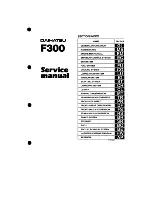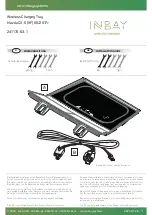
Tire information placard
: A placard showing the OE (Original Equipment) tire sizes, recommended inflation
pressure, and the maximum weight the vehicle can carry.
Tire Identification Number (TIN)
: A number on the sidewall of each tire providing information about the tire
brand and manufacturing plant, tire size and date of manufacturer.
Inflation pressure
: A measure of the amount of air in a tire.
Standard load
: A class of P-metric or Metric tires designed to carry a maximum load at 35 psi [37 psi (2.5 bar) for
Metric tires]. Increasing the inflation pressure beyond this pressure will not increase the tires load carrying capability.
Extra load
: A class of P-metric or Metric tires designed to carry a heavier maximum load at 41 psi [43 psi (2.9 bar)
for Metric tires]. Increasing the inflation pressure beyond this pressure will not increase the tire's load carrying
capability.
kPa
: Kilopascal, a metric unit of air pressure.
PSI
: Pounds per square inch, a standard unit of air pressure.
B-pillar
: The structural member at the side of the vehicle behind the front door.
Bead area of the tire
: Area of the tire next to the rim.
Sidewall of the tire
: Area between the bead area and the tread.
Tread area of the tire
: Area of the perimeter of the tire that contacts the road when mounted on the vehicle.
Rim
: The metal support (wheel) for a tire or a tire and tube assembly upon which the tire beads are seated.
Maximum load rating
: a figure indicating the maximum load in pounds and kilograms that can be carried by the
tire. This rating is established by the tire manufacturer.
Maximum permissible inflation pressure
: the greatest amount of air pressure that should ever be put in the tire.
This limit is set by the tire manufacturer.
Recommended tire inflation pressure
: inflation pressure, established by Volvo, which is based on the type of tires
that are mounted on a vehicle at the factory. This inflation pressure is affected by the number of occupants in the
vehicle, the amount of cargo, and the speed at which the vehicle will be driven for a prolonged period. This
information can be found on the tire inflation placard(s) located on the driver's side B-pillar or on the inside of the fuel
filler door on Canadian models, and in the tire inflation table in this chapter.
Cold tires
: The tires are considered to be cold when they have the same temperature as the surrounding (ambient)
air. This temperature is normally reached after the vehicle has been parked for at least 3 hours.
228
06 Maintenance and specifications
Wheels and tires
Vehicle loading
Properly loading your vehicle will provide maximum return of vehicle design performance.
Before loading your vehicle, familiarize yourself with the following terms for determining your vehicle's weight
ratings, with or without a trailer, from the vehicle's Federal/Canadian Motor Vehicle Safety Standards (FMVSS/
CMVSS) label, and the vehicle's tire information placard:
Curb weight
The weight of the vehicle including a full tank of fuel and all standard equipment. It does not include passengers,
cargo, or optional equipment.
Capacity weight
All weight added to the curb weight, including cargo and optional equipment. When towing, trailer hitch tongue load
is also part of cargo weight.
NOTE
For trailer towing information, please refer to the section "Towing a trailer" on
page 182
.
Содержание 2007 S80
Страница 106: ...Contents Top of Page...
Страница 165: ...167 04 Comfort and driving pleasure This page left intentionally blank Contents Top of Page...
Страница 206: ...Engine compartment upper Engine compartment front Engine compartment lower Positions...
Страница 209: ...214 06 Maintenance and specifications Fuses 215 06 Maintenance and specifications Fuses Trunk...
Страница 210: ...Positions...
















































